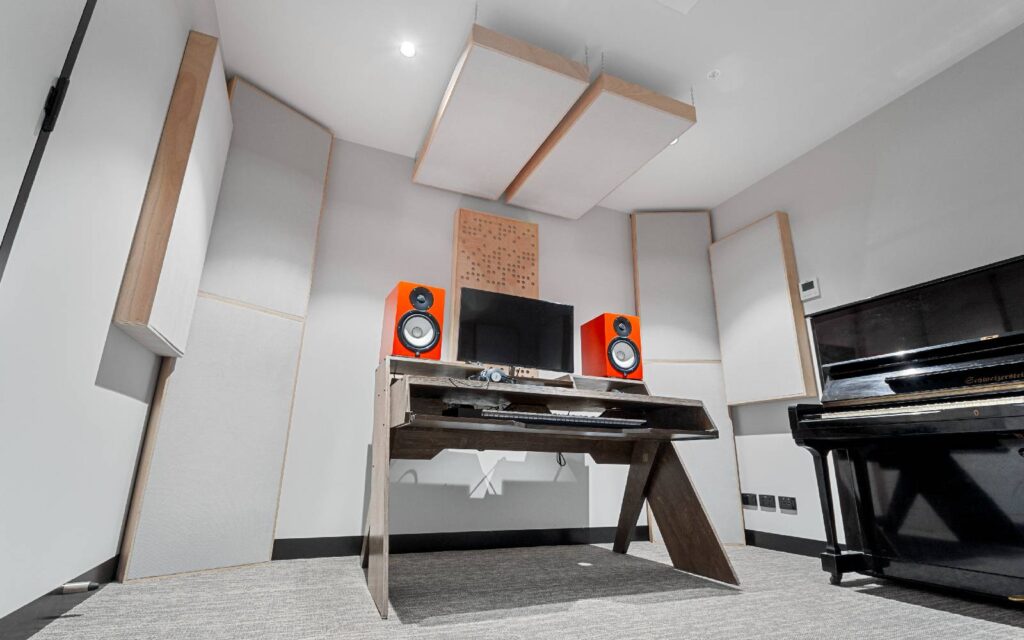Have you ever dreamed of a MIDI controller that could turn your touch into music just like a real instrument? Meet Loom.
Loom is a multidimensional MPE MIDI Controller designed for immediate playability and expressiveness from Aodyo Instruments.
Loom MPE Multidimensional MIDI Controller
MPE synthesizers and virtual instruments offer you rich sounds that respond to the slightest variation, but there are few controllers fit to the task. At Aodyo Instruments, we have drawn on our previous experience with the Sylphyo and the Anyma synthesizers to offer musicians a versatile and powerful device. Whether you play live, record in the studio or compose music in your bedroom, Loom will become a flexible and original addition to your setup.
Read all the latest product & music industry news here.
Don’t be fooled by its simple appearance: Loom’s magic lies in the synergy between its surfaces and sensors, offering you different playing modes that will allow you to play almost any kind of virtual instrument or synthesizer.
Playing modes
Unravel evolving chords, weave intricate melodies, craft expressive rhythms. Any way you choose to approach it, Loom is designed as an extension of your hands.
But if you want to break free from the keys, Loom can also work as a MIDI Ribbon, allowing for smooth sliding across its surface. Optionally, it can make sure you land on the right note, making it easier to play with others without losing the free-form nature of the ribbon.
The keyboard, ribbon, strum, and drumkit modes are only the first four, we’re already busy imagining other ones that we’ll develop and offer later via free software updates: pads, ondes Martenot, etc. You’ll even find some in the videos below.
If you have a great idea for a mode, let’s discuss it!
Multidimensional and multitouch tactile surface
Loom features a multidimensional tactile surface, enabling each finger to control pitch (X axis), timbre (Y), and dynamics (Z) independently. In addition, a patent-pending dynamic sensing system analyzes when your fingers land to determine impact force.
Sliders and bars (front/back)
Loom’s uniqueness stems from its additional controls on the front and back sides, making your thumbs play a pivotal role. The slider of the left can be used as a modulation wheel, and the bar on the right can be your sustain pedal or a way to mute cymbals. You can make the back slider and bar do the same thing, or something entirely different. With these, thumb twiddling is not an option.
Built for MPE and legacy MIDI
MIDI MPE (MIDI Polyphonic Expression) is an extension of the MIDI (Musical Instrument Digital Interface) standard that enables more nuanced and expressive performance capabilities for electronic instruments. Traditional MIDI communication allows for control changes to be applied globally across all notes of an instrument. In contrast, MPE assigns each note its own unique channel, allowing for individual control of pitch, volume, and timbre per note.
This innovation opens up a new realm of expressive possibilities, letting musicians bend, slide, and modulate notes independently, much like on acoustic instruments. By providing detailed control over each note’s parameters, MPE enhances the expressiveness of electronic music performances. Loom is designed from the ground up for MPE, but it also works very well with any non-MPE MIDI instruments, even monophonic ones!
Developer-friendly
You’re not limited to the modes we’ve designed. If you know your way around code, you can also take over and create your own. You can send a specific MIDI message to enter developer mode, where every input will be sent as-is, and you’ll be able to control the LEDs and display by sending MIDI SysEx messages to the Loom from your own program or script running on your computer. This way, you can entirely control what’s happening on your Loom, design new playing modes that you can distribute to others, or use Loom as an experimentation platform.
Connectivity
Using a USB or MIDI cable, you can easily connect your Loom to all your hardware and software: VSTi, Audio Units, hardware, etc.
For more ingo, keep reading at Aodyo Instruments here. To contribute, visit the Kickstarter here.







